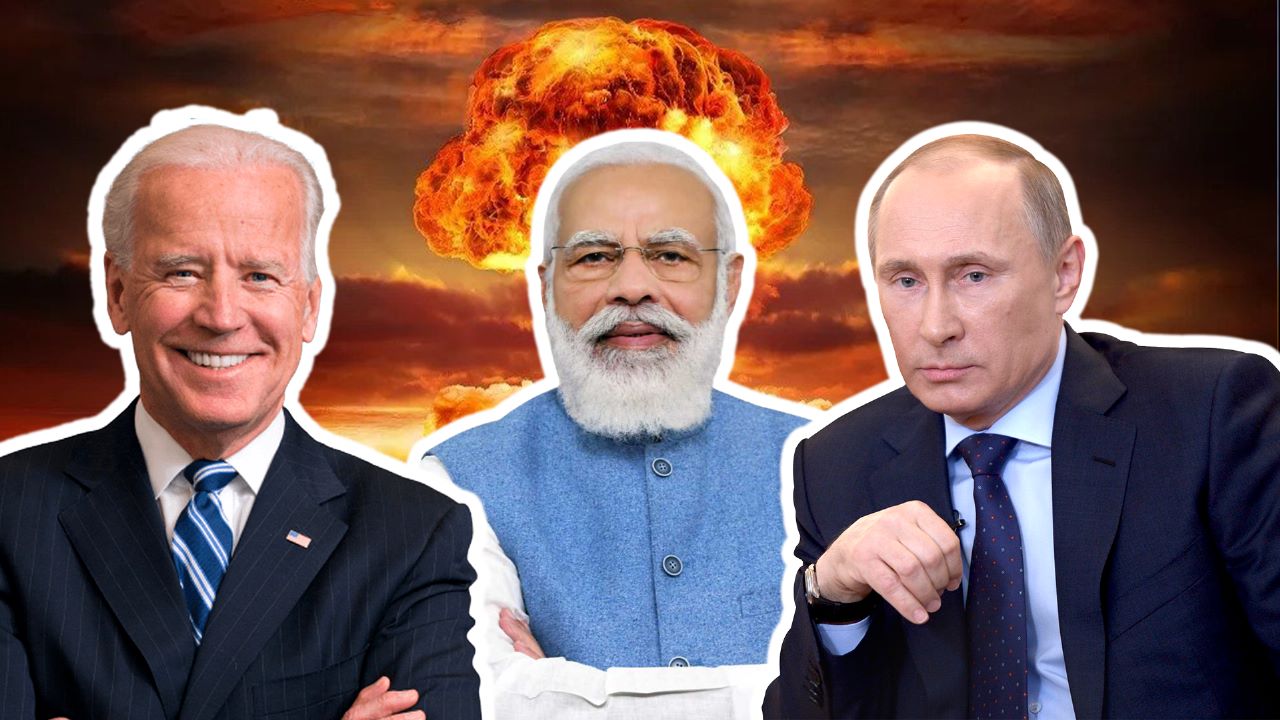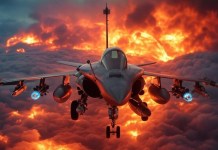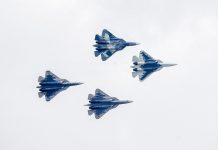In the prevailing unstable and unpredictable global scenario, equations among nations are changing rapidly. Israel’s friendship with Arab countries; the US handshake with a one-time adversary of the Cold War-era Ukraine; nations like Sweden and Finland, known for their non-aligned status even during the second world war jumping into the NATO bandwagon are some examples.
Germany ‘Shocked’ By Leopard-2 Casualties, Wants To Retreat! Russian Media Goes Ballistic Over MBTs ‘Debacle’
National and international media is on fire with developing US-India bonhomie. The visit of PM Modi to the US is being touted as one of the most critical strategic meetings of the two largest democracies of the world in the post-Covid era.
Post-First World War Era
While Europe was still burning and desperately trying to come to terms with the devastation caused during four years of war, the US was conveniently busy developing the latest technology.
The US had no interest in the affairs of European nations. China and India were not even on the horizon of US policymakers. Tyrannical British rule in India did not even find a mention in any of the US policy papers on global status.
An example of US indifference to Europe became evident when the US clearly and unambiguously stated that events in Europe leading to the Second World War were internal issues among European nations.
Although the Second World War commenced in 1939, the US did not join the war efforts of allied nations until after December 7, 1941, when Japan struck the US fleet.
Such an indifferent attitude of the US was on display when it refused to join Second World War even after Germany opened the Russian front on June 22, 1941. Global history might have been different had Japan not resorted to the Pearl Harbour attack.
Entry Of The US Into The Second World War
The US joining Second World War immediately resulted in adverse results for Axis forces led by Germany. The US provided direct and indirect help to Russia (then USSR), which defeated the advancing German Army.
The USSR was to become US’ most envied adversary due to diametrically opposite views on sharing the spoils of the Second World War.
The US saw an opportunity to control global affairs, especially since it was the only nuclear power. The US thus became responsible for forcing (read coercing) other nations, USSR and China, in particular, to develop nukes.
Sitting across the vast Atlantic Ocean, the US was fully protected from any conventional attacks from USSR. The advent of ICBMs closed that gap.
In an attempt to keep the USSR at bay, the US enticed European nations to form a military alliance with the US as an undeclared ‘captain.’ Twelve-nation military alliance North Atlantic Treaty Organization (NATO) took birth as a counter to Warsaw Pact, a USSR-led coalition.
Global instability due to ideological differences led to the Korean and Vietnam wars. The US experimented with the latest weapons. It is another issue that the US suffered massive casualties at the hands of bamboo-wielding Vietcongs.
The US propagated the strategically most obnoxious precept during the Cold War era when it said, “Those who are not with us are against us.” The US leadership abhorred India’s non-aligned stance. The US started arming novice and unstable Pakistan to ‘teach’ India a lesson. Direct US military aid to Pakistan led to the 1965 and 1971 Indo-Pakistan conflicts.
However, a small window of the US-India bonhomie during the Kennedy era existed. Unfortunately, JFK’s assassination on November 22, 1963, shut that window. Lyndon Johnson, who succeeded JFK, will go down in history as one of the most anti-Indian presidents of the US.
US-led nuclear proliferation was taking the globe by storm. Five permanent members of the UNSC decided to split the world into two groups of ‘haves’ and ‘have nots’ by promulgating the unequal global treaty, the non-proliferation treaty (NPT).
Adverse US Responses With Reference To India
Successive US governments have adopted anti-India stances. A few significant instances are:
- Supporting UNSC resolutions number 99 (Goa) and 100 (J&K) against India. Both resolutions were vetoed by our all-weather friend Russia (then USSR).
- The US stopped France from supplying the French advanced jet trainer Alpha Jet for IAF.
- Forcing Russia to cancel the deal to supply cryogenic engines for our space program. This was accomplished by current POTUS Joe Biden, who threatened Russia with an aid cutoff if it failed to comply with US request (read dictate).
- The US placed India under various sanctions after Pokhran II.
- The US opposed the appointment of Shashi Tharoor as Secretary General of the United Nations.
China’s Emergence As Global Power
The reverse engineering policy of China, which was being scoffed at in the late 70s early 80s by all and sundry, including India, has placed China nearly at par and, in a few cases, ahead of the US.
China’s biggest accomplishment has been establishing an independent space station. The US needs a ‘partner’ near China to neutralize/contain China’s growth.
Developing Indian Economy & Military
India has slowly but surely inched forward to become the fifth-largest economy in the world. The extremely resolute and firm response by the government of India after the Chinese misadventure in Galwan three years ago has made India the prime candidate for US attention.
Since 2004 there has been a definite shift in the US stance towards India.
Modern and state-of-the-art equipment viz P8i, the most modern submarine tracker/hunter of US origin, has been supplied to Indian Military along with C-17s and C-130Js for IAF.
The most recent US offer to set up an aero engine manufacturing unit and a supply of MQ9B Reaper is likely to be the latest addition.

Selective US Inclusion Of India
Dormant QUAD suddenly and overnight became the most critical topic globally. Because the US realized that Chinese dominance in IOR could not be accomplished by the trans-Atlantic US, it needed India to support the US and keep China under check. The US does not have any submarine base in IOR.
India provides an ideal opportunity for the US to establish a near-permanent submarine base, preferably on the eastern seaboard of India. Diego Garcia Island is too far to the south. However, when the US decided to form CHIP 4 alliance, it ignored India.
US As A Trustworthy Partner?
The US does not hesitate to turn back on its words as it did to the promise made by James Baker to Russia during German reunification. Yet another example of double speaking/double standard practiced by the US is imposing sanctions on Turkey, a NATO ally, for importing S-400 from Russia but leaving India out of the sanctions list for importing the same weapon.
Incidentally, 90 nuclear warheads of the US are stored in the Incirlik air base in Turkey even today.
Sooner than later, the US will pressure India to reduce its dependence on Russian equipment.
Will the US impose conditions on India, such as the non-use of US equipment against Pakistan? Worse still, will the US continue to arm Pakistan through Turkiye?
Is the US genuinely concerned by India’s security needs? Or is it to keep China at bay? Whatever the answer may be, the reality is both India and the US ‘desperately’ need each other, and the relations can only prosper if the US is sincere this time.
- Gp Cpt TP Srivastava (Retd) is an ex-NDA who flew MiG-21 and 29. He is a qualified flying instructor. He commanded the MiG-21 squadron. He is a directing staff at DSSC Wellington and chief instructor at the College of Air Warfare. VIEWS PERSONAL OF THE AUTHOR
- Follow EurAsian Times on Google News




